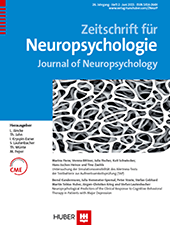Literatur
(2013). False positive diagnosis of malingering due to the use of multiple effort tests. Brain Injury, 27, 909 – 916.
(2015). Die Interpretation der intraindividuellen Variabilität bei psychischen Störungen oder psychiatrischer Komorbidität: Ein Diskussionsbeitrag zum Beitrag von S. Bodenburg. Zeitschrift für Neuropsychologie, 26, 61 – 63.
(2014). Die Standardabweichung der Reaktionszeiten als ein Maß für negative Antwortverzerrungen. Zeitschrift für Neuropsychologie, 25, 89 – 97.
(2013). Cognitive intra-individual variability has a positive association with traumatic brain injury severity and suboptimal effort. Archives of Clinical Neuropsychology, 28, 640 – 648.
(2014). Minimizing false positive error with multiple performance validity tests: Response to Bilder, Sugar, and Hellemann. The Clinical Neuropsychologist, 28, 1230 – 1242.
(2014). Stability of intraindividual variability as a marker of neurologic dysfunction in relapsing remitting multiple sclerosis. Journal of Clinical and Experimental Neuropsychology, 36, 455 – 463.



